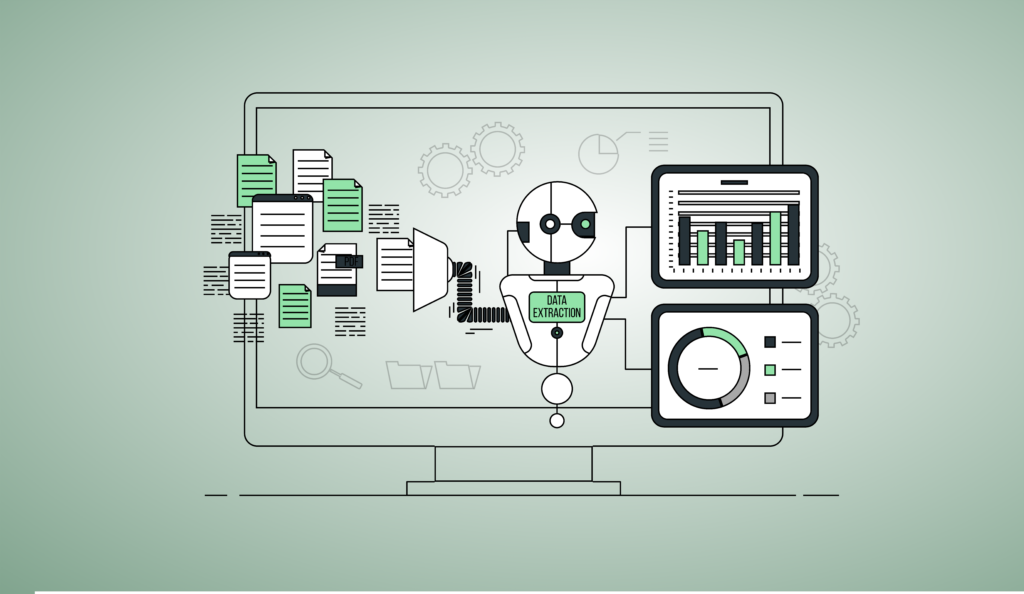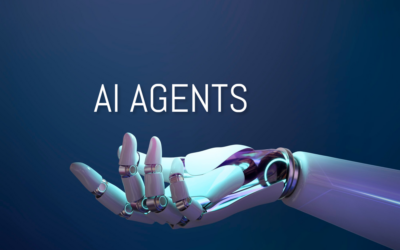Table of Content
Data has become a strategic asset for most businesses and is critical for gaining operational performance. ETL pipelines are part of the data strategy and an important component of the digital transformation journey.
Enterprises now generate an explosive amount of data—but only about 10 percent of businesses leverage data as their secret sauce for developing innovative offerings and modernized operations.
Data resources must be shared across company systems, applications, and services for efficient and effective use. However, organizations often struggle with data quality issues and the complexity of integrating diverse data sources in real time while maintaining system performance.
Data management best practices aim to optimize the synchronization of data acquisition, storage, sharing, and usage, improving the synergies among business areas and avoiding siloes.
Data is a primary component in innovation and the transformation of today’s enterprises. However, developing an appropriate data strategy is not easy, as modernizing and optimizing data architectures requires highly skilled teams and careful consideration of scalability and maintenance costs.
This paper provides foundational ETL concepts to help your organization build robust data pipelines. For personalized guidance on implementing these strategies in your environment, contact a Krasamo engineer to discuss your ETL strategy and explore tailored solutions.
Data Integration Challenges
Enterprises are generating more data than ever from various environments, including on-premises systems, private clouds, and public clouds. Consolidating this data into a unified platform presents significant challenges due to diverse formats, fragmented sources, and differing infrastructures.
A successful ETL strategy must address these complexities and ensure the flexibility to integrate new platforms or switch service providers as business needs evolve.
Data creates considerable metadata from different sources that must be leveraged for business decisions. Metadata must be aggregated into the data pipeline to understand its characteristics and relationships best and to obtain the quickest insights for smart analytics and business intelligence.
Clean, curated datasets are critical for embedding and fine-tuning in AI applications. ETL processes are foundational in achieving the high-quality data required for AI/ML models.
By ensuring data is consistently cleansed, transformed, and aligned with business goals, ETL pipelines facilitate the creation of datasets that drive accurate predictions and meaningful insights in advanced analytics.
Data Integration Solutions with Orchestration Capabilities
Businesses must embrace a data strategy with next-generation integration platforms with capabilities in many domains.
ETL pipelines and services are set up within a data integration platform to continuously manage operations efficiently, improve the quality of the data, and support the following capabilities:
- Batch
- Bulk
- Real-time
- Data replication
- Smart transformations
- Metadata activations
ETL/ELT Pipeline Integration Process
Information arrives from different sources and in various file formats and must be collected, processed, stored, and analyzed.
Data Architecture
Enterprises must consider their technology and internal capabilities when designing their data architecture and choosing the best data integration method. With dramatically decreasing cloud storage costs, the traditional approach to data processing has evolved significantly.
ETL vs. ELT?
These are two primary methods typically considered for building data processing pipelines. Each has advantages and disadvantages, depending on the use case, but their basic difference is where the data is transformed. Handling structured and unstructured data is a challenge that requires a custom solution and the right tools for the job.
ETL—extract, transform, load—is the process of extracting data from different data sources, transforming it at the source, and then loading it into databases or data warehouses. (Data is initially extracted into a staging area for cleaning and organization.)
ELT—extract, load, transform—is the process of extracting data from the source, loading it into the cloud platform, and then transforming it in the cloud.
ELT offers a faster ingestion process and preserves historical data, allowing for modifications to the transformation formula when needed. Modern data workflows typically stage all data in the cloud, except for high-volume streams like IoT sensor data, where pre-staging aggregation enhances efficiency.
Many customers are shifting to ELT due to cloud storage’s cost-effectiveness, the possibilities of building advanced transformations, the simplified data mapping, the ease of leveraging visual tools, and the availability of open-source ELT solutions. In addition, intelligent integration platforms can perform transformations without requiring a staging area.
ETL Pipeline Workflows
ETL developers design workflows to develop and manage ETL pipelines. Data is usually discovered and extracted from relational database management systems (RDBMS), ERP, Hadoop, SaaS, Cloud, IoT sensors, apps, and other sources, and it comes in formats such as JSON, XML, CSV, text, HL7, and Excel, to name a few.
In recent years, the rise of streaming data has fundamentally reshaped the data processing landscape. Streaming data, generated continuously from sources like IoT devices, web applications, and cloud platforms, requires pipelines capable of handling real-time ingestion and processing. To adapt, ETL workflows must incorporate approaches for both bounded datasets, which have a clear beginning and end, and unbounded datasets, which are continuous.
One effective technique is micro-batches, which operate on small data windows, bridging the gap between traditional batch processing and full real-time streaming. Micro-batch workflows enable efficient processing while maintaining near real-time latency, making them ideal for use cases such as operational analytics and time-sensitive AI models.
An exploration of data transformation methods and solutions reveals the diversity and importance of this critical ETL phase. Data transformation involves manipulating raw data into usable formats that add value to business processes and analytics. It enhances data quality, ensures consistency, and prepares data for downstream applications like business intelligence and machine learning.
Key transformation patterns include:
- Enrichment: Adding supplementary information to datasets.
- Joining: Integrating multiple datasets by common keys.
- Filtering: Selecting specific data subsets.
- Structuring: Reformatting raw data for analytical needs.
- Aggregation: Summarizing data for higher-level insights.
Modern workflows execute transformations in environments such as data warehouses, lakes, or lakehouses, often using frameworks like Apache Spark or cloud-native tools like Databricks. Best practices emphasize modular design, scalability, and leveraging frameworks for reliable, declarative pipelines.
Data Preparation
Data is extracted from databases in batches or by streaming from various sources using a set of connectors that enable data ingestion. The extracted data can then be processed through two main approaches:
- Traditional coding: blended with transformation programs coded in languages like Python (using libraries such as Pandas, Polars, or DuckDB) or Java.
- Low-code solutions: Using code-free ETL/ELT tools such as Talend, Fivetran, and Apache Airflow, which provides an intelligent data preparation process that streamlines:
- Data cleansing
- Data blending
- Data wrangling
Data must be prepared before entering an analytic platform to work seamlessly across different environments:
- Cloud platforms
- Hybrid setups
- Multi-cloud configurations
Modern ETL pipelines can be created using various approaches:
- Fully managed ETL services (like AWS Glue and Tableau Prep)
- Cloud-native transformation tools (like Databricks SQL)
- Serverless data warehouses (which can scale dynamically for transformation workloads)
When choosing a transformation approach, teams should consider their current needs and long-term data strategy, including cost, scalability, and maintenance requirements.
ETL Pipelines and Data Integration
Data integration services help discover, prepare, and combine data from various sources and organize it within databases, data lakes, and data warehouses. These services can manage complex orchestration workflows and provide an operational dashboard to visualize and understand the pipeline’s performance.
Data Orchestration
Data orchestration coordinates data flow across various systems, ensuring seamless transitions between ingestion, transformation, and storage processes. Key capabilities include:
- Handling batch and streaming data pipelines.
- Managing dependencies and scheduling tasks across environments.
- Automating error handling and retry mechanisms.
- Enhancing metadata visibility for monitoring and lineage tracking.
Data orchestration ensures reliable data flow through complex ecosystems, supporting scalability and enabling real-time analytics.
Data orchestration ensures reliable data flow through complex ecosystems, supporting scalability and enabling real-time analytics.
Developers often leverage REST APIs and SDKs to integrate ETL pipelines across cloud and hybrid environments. These tools provide robust management and monitoring capabilities, enhancing agility, speed, and reliability in data workflows.
Additionally, ETL developers use CI/CD practices to design automated pipelines, incorporating functional testing to ensure system requirements are met. These automated workflows improve efficiency and scalability, making them essential for modern data strategies.
Metadata and Data Models
Metadata is data that provides informational elements that describe the data, providing context, relevance, and value.
Metadata management is a strategic process, as it collects metadata and identifies the data elements to represent its value and give meaning for easy retrieval. Metadata can be descriptive, structural, or administrative; it is stored in tables and fields within the database.
Metadata is organized into technical, business, usage, operational, and infrastructure categories and combined into a common metadata layer for processing.
ETL best practices indicate that the ETL pipeline must set up automatic capturing of metadata, which requires an understanding of the structures and relationships between datasets.
Metadata exchange between catalogs allows end-to-end viewing and optimum data models. Data is indexed through a data catalog that is built to enhance the management of data assets.
ETL systems pay special attention to data protection, Key Management Service (KMS), and integration with cloud data loss prevention (DLP) solutions by tagging sensitive data, establishing rules, and designing solutions to mask, redact, and encrypt data-in-transit—while always adhering to company and regulatory compliance standards.
It is critical to understand how data is progressing and interacting with other datasets during the creation of the ETL pipeline. Therefore, it is necessary to have a visualization tool capable of observing the data flow (data lineage) to make effective assessments and analyses, as well as to understand the sources and transformations and determine how data is being affected by changes during the process.
Smart Mapping Capabilities
Data mapping is the process of matching values and attributes of data from different sources (data fields) and integrating them for analytic purposes. Several techniques are used to accomplish this task. Modern platforms are becoming fully automated, bringing new deployment flexibility to an ETL pipeline flow.
Data Warehouse
A cloud data warehouse provides a robust infrastructure with high computing power, serving as a central repository for filtered, processed data from multiple sources. These systems are optimized for analytical workloads and support business intelligence, reporting, and decision-making processes. Data warehouses also serve as back-end platforms for developers, enabling the integration of analytical tools into applications.
However, as data management needs evolve, traditional data warehouse architectures face limitations. They struggle to efficiently handle unstructured or semi-structured data, limiting their flexibility in certain use cases, such as machine learning and real-time analytics. Data warehouses often involve high maintenance costs and vendor lock-in risks due to proprietary data formats, which can restrict interoperability with other tools and platforms.
Modern advancements, such as cloud-native solutions like Snowflake and Google BigQuery, have addressed some of these challenges by offering scalability, automation, and improved flexibility while retaining their core analytical strengths.
Data Lakes
A data lake is a storage repository designed to hold raw data in its original format, accommodating both structured and unstructured data. Unlike traditional ETL processes, data lakes typically use an ELT approach, where raw data is loaded first and only transformed as needed for business intelligence or analytics.
Initially built using on-premises open-source frameworks like Apache Hadoop, many organizations have transitioned to cloud-based data lake architectures, leveraging tools like Apache Spark for distributed data processing and transformation. Data lakes are particularly well-suited for supporting machine learning workloads due to their ability to store diverse datasets.
However, traditional data lakes have notable limitations, including:
- Lack of transactional support.
- Challenges in mixing batch and streaming jobs.
- Data quality and governance issues.
- Complex processes for moving data from lakes to warehouses for analytics.
Recent innovations, such as Delta Lake and Apache Iceberg, address these issues by adding features like schema enforcement, ACID transactions, and improved batch-streaming integration, making data lakes more reliable and versatile.
Lake House Architecture
The lake house architecture represents a next-generation approach to data management, combining the best features of data lakes and data warehouses. It provides a unified platform where structured, semi-structured, and unstructured data are stored in an open format, allowing seamless access from multiple tools and frameworks.
Key benefits of lake house architectures include:
- Transactional Support: ACID transactions ensure reliability and consistency for data operations.
- Flexibility: Supports diverse workloads, including batch processing, streaming data, machine learning, and real-time analytics.
- Open Formats: Independence from proprietary systems enables organizations to change vendors or tools without disruptions.
- Unified Storage: An object-based storage layer consolidates data, reducing the need for separate lakes and warehouses.
Popular frameworks like Databricks, Delta Lake, and Apache Iceberg power modern lake house implementations, offering scalable and cost-effective solutions with elastic storage and compute capabilities. By unifying data and teams, lake house architectures enable efficient collaboration and simplify governance, making them ideal for enterprises looking to balance cost, scalability, and analytics capabilities.
ETL Tools
While there are many solutions for delivering and integrating data, an ETL tool is a vital component of data warehouse needs. The ETL process is an essential step in data warehouse operations as it unlocks the value of the data and makes it easier to analyze.
Cloud-based ETL tools. Cloud-based ETL tools are often easier to implement than other tools because they offer faster integrations. Visual tools execute ETL pipelines directly in cloud data warehouses such as BigQuery, Redshift, Snowflake, and Azure. Many tools are available to build transformations with a user interface that are also enabled to run code.
- Dataflow
- BigQuery
- AWS Glue
Custom-built ETL tools. Custom solutions are developed to meet certain use case needs and address unique situations. A solution can be developed by custom coding an ETL pipeline in Python or SQL with available open-source frameworks, libraries, and tools.
Python tools vary depending on the needs of the ETL strategy. For example, you can build a data pipeline using Apache Beam, run it using a database abstraction provided by Spark, and manage it with Apache Airflow.
Conclusion
Unlocking new directions in data strategy and building an ETL pipeline often raises many questions: How should a data architecture be set up? How can data exploration be optimized? How do you run a pipeline effectively? And how can you scale efficiently?
Decisions such as whether to code a custom data pipeline, leverage existing tools, or adopt a hybrid approach depend on assessing a company’s operations, workflows, technologies, maturity level, and skillsets, among other factors.
For many enterprises, the shortage of qualified talent poses a significant challenge to scaling. This is why engaging in a collaborative partnership with an app development company can be invaluable. Such a partnership can help you design a robust ETL strategy tailored to your business needs and goals.












